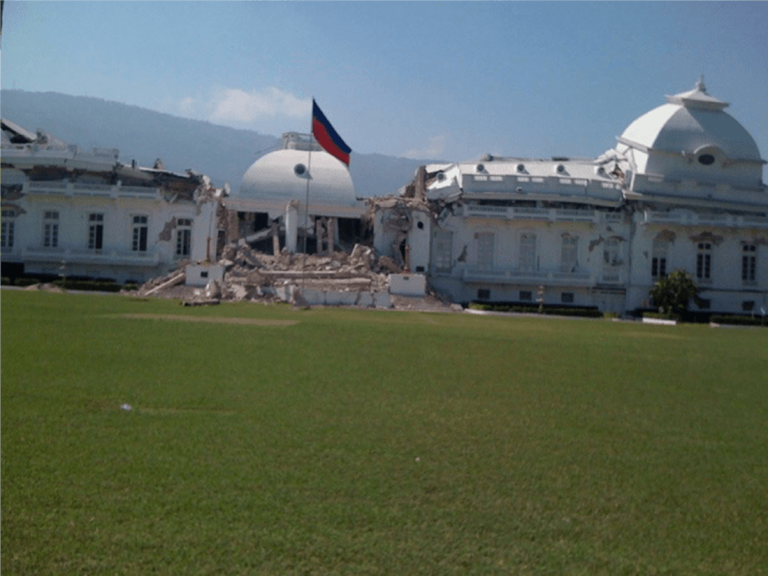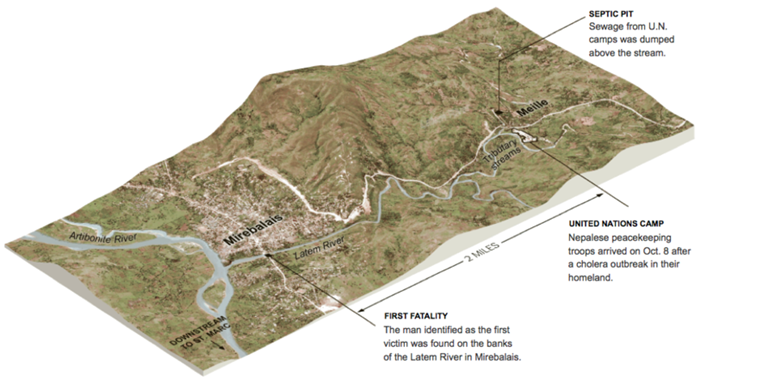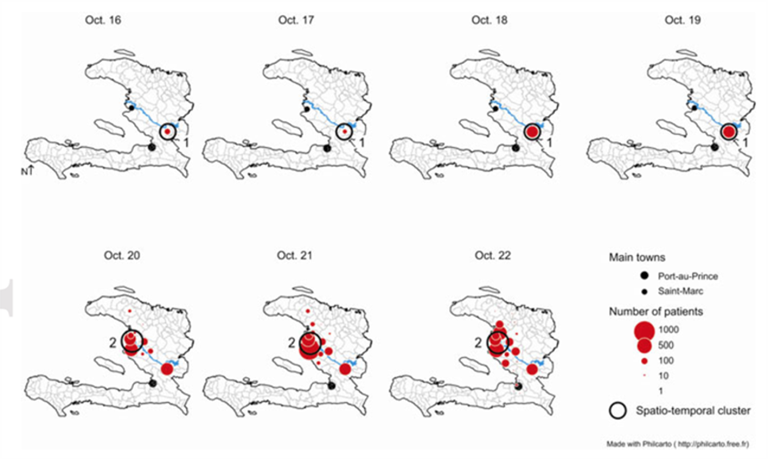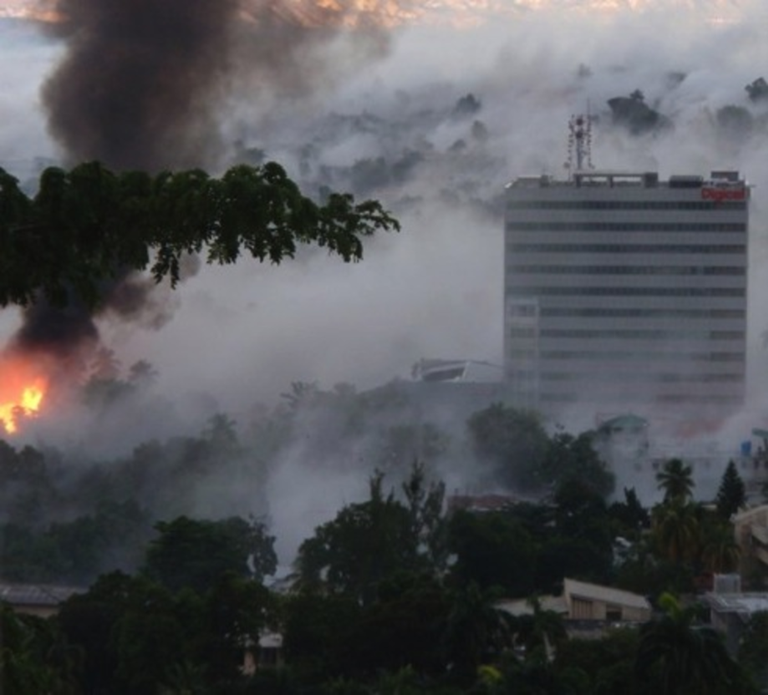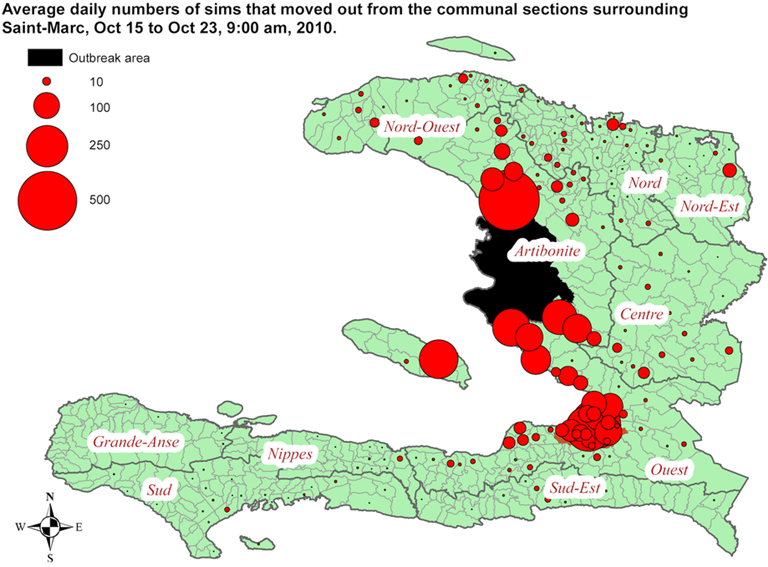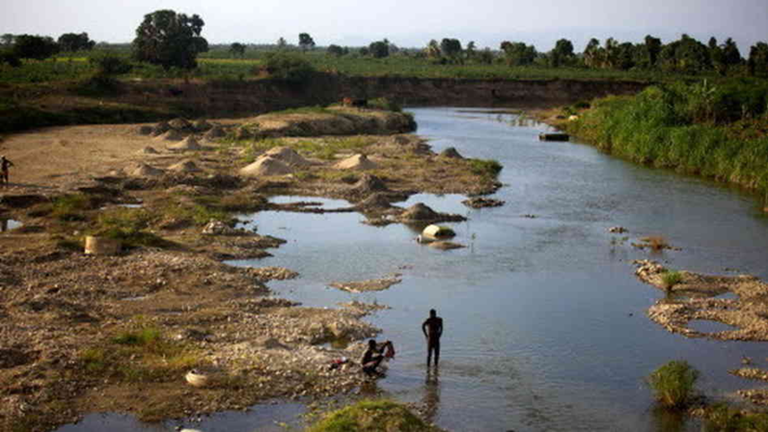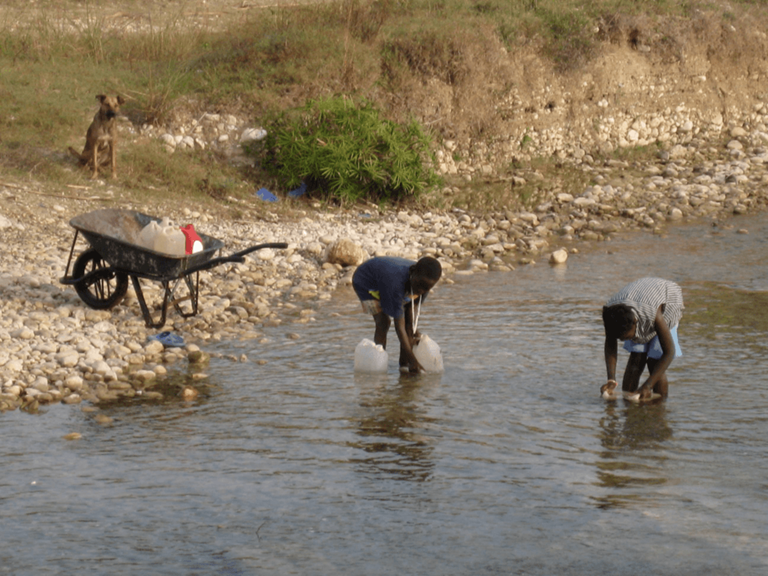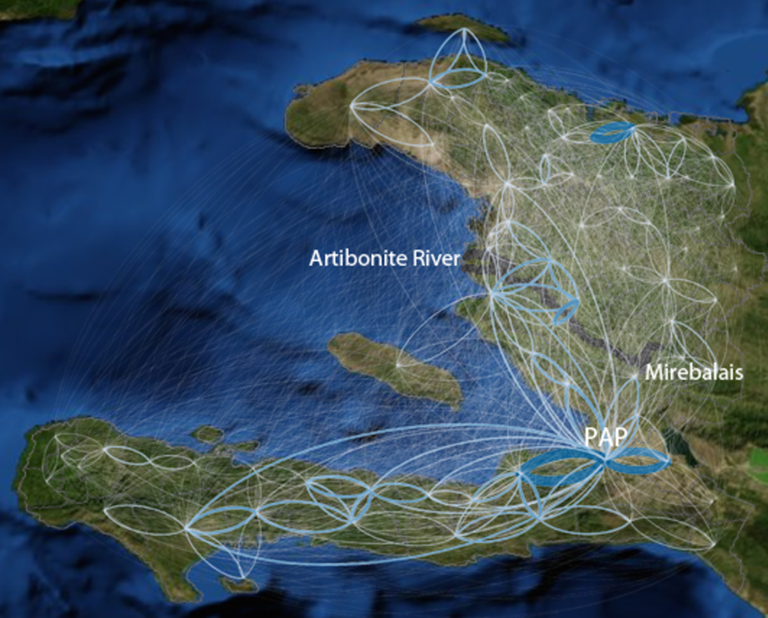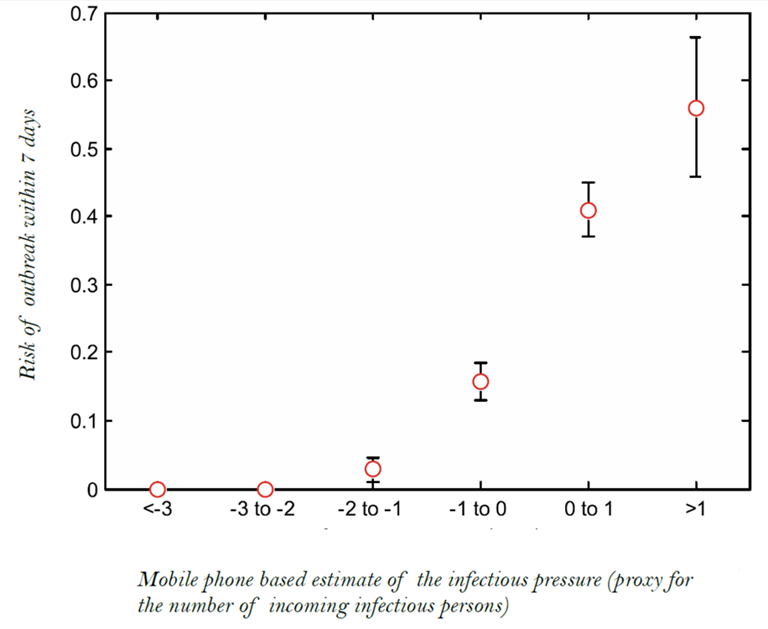Using Mobile Phone Data to Predict the Spatial Spread of Cholera
The October 2010 Haitian outbreak was the largest cholera epidemic to strike a single country in recent history. As of November 13, 2013, the Haitian cholera epidemic had caused 8,448 deaths, and 689,448 cases had been registered.
Haiti had just endured the tragic earthquake ten months previously, leaving hundreds of thousands of people homeless, forced to live in temporary camps or with crowded host families. The government was severely crippled after years of weak governance and large-scale damage to infrastructure. Haiti had not endured a cholera outbreak for at least a hundred years. The population had no immunity and the health system had no previous experience of any similar large-scale epidemic. The outbreak commenced with the contamination of the Artibonite River by a Vibrio cholera O1 strain near Mirebalais, 60 km north of the capital Port-au-Prince. The first confirmed cholera case resided in Meille, a hamlet two miles south of Mirebalais, and developed symptoms on October 14, 2010.

